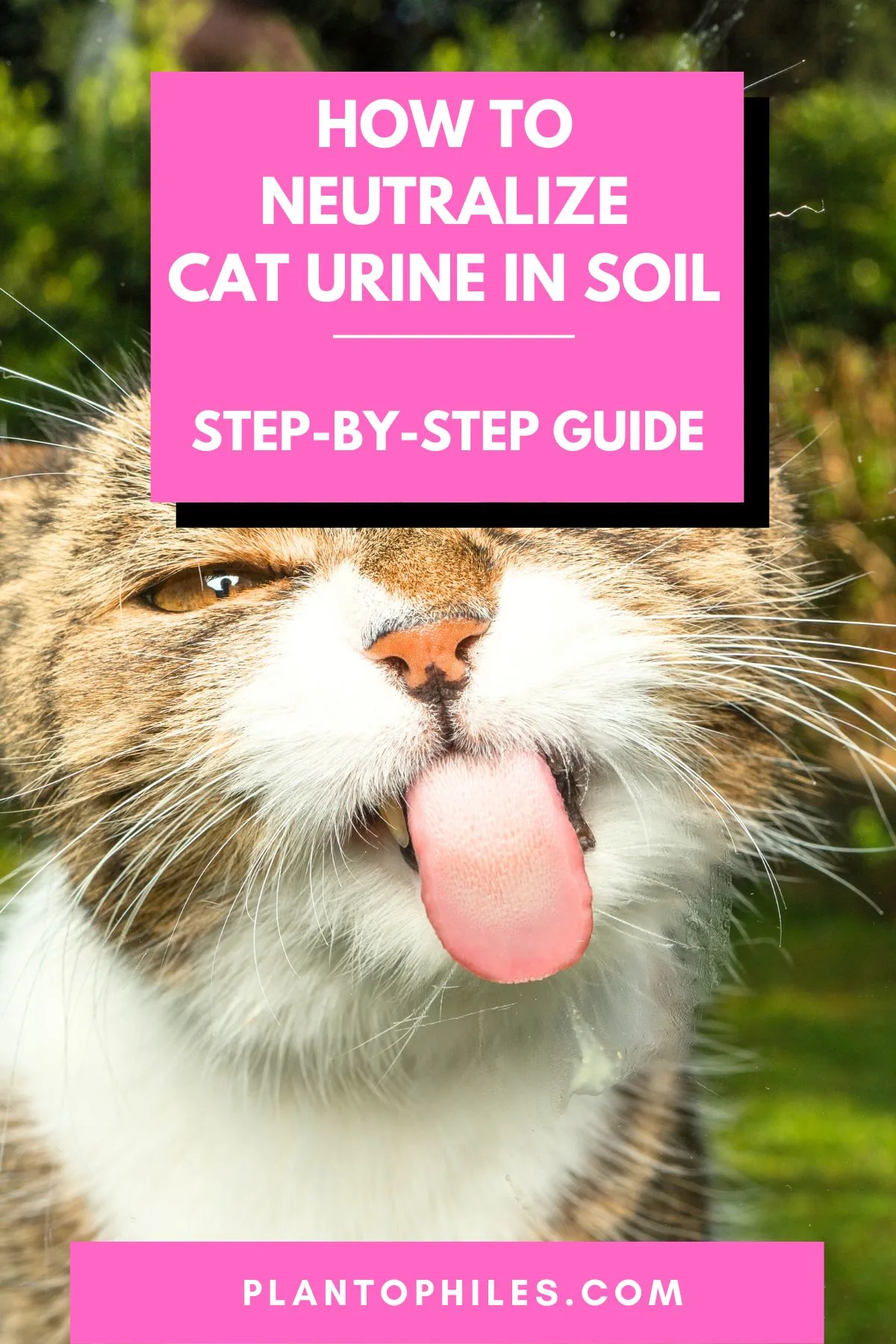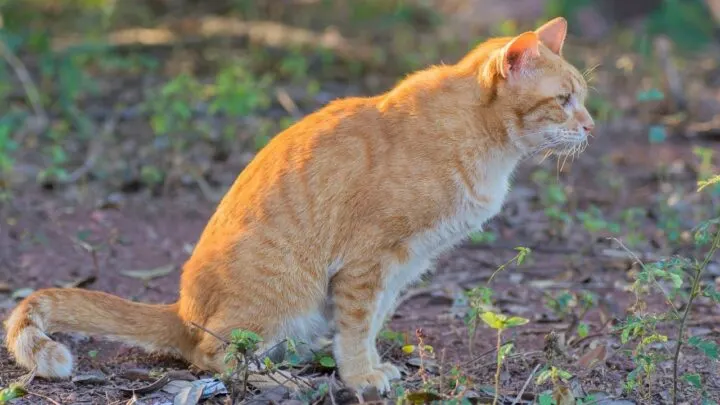Are your houseplants being used by your cat as a toilet?
Not only does it not smell great, but cat urine can also change the pH balance in the soil and could damage your plants and flowers.
Well, help is on hand.
In this guide, we will take you through all you need to know to neutralize cat urine in soil.
Table of Contents
How to neutralize cat urine in soil
To neutralize cat urine in soil, rinse the soil thoroughly, so that the water flushes right through. Then, let the plant drain and dry. Use a 2:1 water to baking soda spray to remove the remaining odor. Finally, add cat deterrents like rocks or tin foil to the soil.
Step 1 – Removing the existing urine from the soil
Wash the soil out with water
The first step is to try to remove as much of the urine as possible. That will first help remove the smell, but more importantly, it will flush the urine through the soil.
Firstly, take your houseplant outdoors. Then, use a hose or watering can to water the top of the soil enough so it drains right through.
Make sure the water drains correctly
The key is to flush any urine through the soil and out to the other side – but the water needs to drain fully through the soil.
This ensures that the plant does not suffer from any conditions caused by damp soil – such as root rot.
Once flushed, place the plant in a warm or sunny location to help the soil begin to dry out.
Then, you shouldn’t water the plant again until the soil has dried right out. This will usually happen within about a week or two.
Neutralize any remaining smell
A simple mixture of one part of baking soda to two parts water sprayed on to the soil will assist with taking out the remaining smell in the soil.
Remove some of the existing leaves
If the plant is particularly large, or if your cat has been urinating on it for an extensive amount of time, it may be best to trim it back a little in order for it to bring fresh regrowth that hasn’t been affected by the urine.
If all else fails
If you find that your plant still fails to thrive despite these measures, you might need to replant the whole thing in new, fresh soil.

Step 2 -Taking preventative measures
Once urine is removed, the next step is to make sure that your cat stays away from your plant in the future.
There are a lot of tips and ideas going around online – some aren’t exactly cat-friendly (such as putting disposable forks upright in the soil, or filling your plant pot with pine cones!)
In fact, there are a lot of tips that include adding things to the soil that will deter your cat from visiting your plant.
Try putting tinfoil over the soil – cats hate the noise and feel from walking on it.
You could also try a clear plastic screen, cut to the shape of the pot, to prevent your cat urinating directly on to the soil.
Another method is to put large rocks into the pot so that the cat cannot dig at them (this is usually what they do when they “go”)
There are also commercially manufactured cat deterrents available on the market.
These get decent reviews, and it may be worth a try if you keep experiencing the same issue repeatedly. Amazon offers an extensive list.
Frequently asked questions about how to neutralize cat urine in soil
How do I get my cat to stop urinating on my plants?
Try to put something directly on the soil’s surface that will deter your cat without harming it or the plant. Tinfoil is a good solution, as is a clear plastic cover. You can also buy cat repellant sprays.
How do I get the smell of cat urine off my plants?
You will need to rinse the plant from head to toe and wash out the soil to get rid of the smell. Then, neutralize any remaining smell by mixing one part baking soda with two parts water to make a spray. This should help take out the rest of the smell. If not, you will need to repot the plant.

Daniel has been a plant enthusiast for over 20 years. He owns hundreds of houseplants and prepares for the chili growing seasons yearly with great anticipation. His favorite plants are plant species in the Araceae family, such as Monstera, Philodendron, and Anthurium. He also loves gardening and is growing hot peppers, tomatoes, and many more vegetables.


